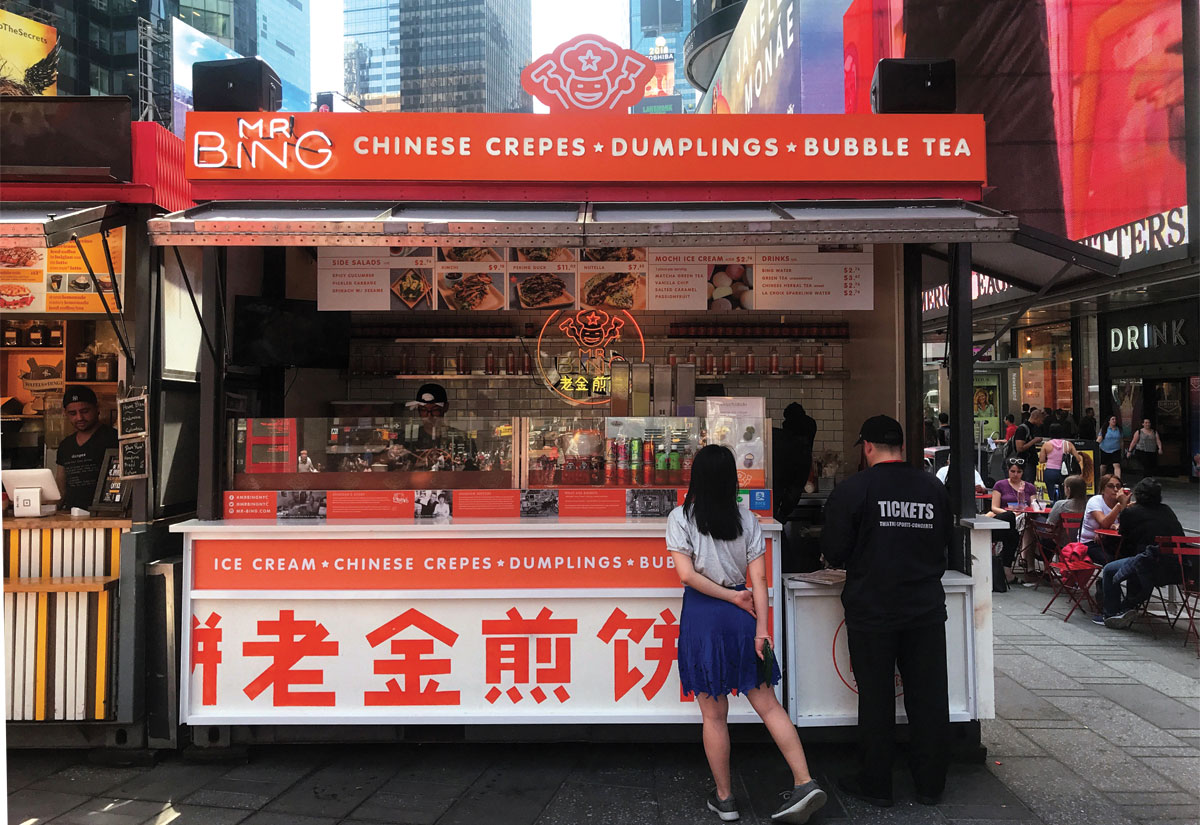In the early years of quick service, consistency was king. A family traveling across the U.S. could enjoy the same McDonald’s experience whether they were in Orlando or Seattle. But as those businesses ballooned into mega-chains, consistency picked up a new connotation: cookie cutter.
Consumers began to chafe at corporations setting up shop without investing in the community or adding a bit of local flair to the establishment. Enter local-area marketing; brands tailor their businesses to fit the surroundings while also continually engaging with the community. Technological advances—particularly social media—are making it easier than ever to reach customers, but many operators still extol the value of organic outreach, too.
Courtney Sinelli / Executive Vice President, Which Wich
Focusing on local-store marketing is a major focus for Which Wich and has been from the start 15 years ago. Our primary approach is simply to get out there. There is no better marketing than getting engaged in the community. Pound the pavement. Get involved with festivals, athletic programs, community organizations. But don’t just take; give back. As a company, we’ve created programs like our Project PB&J, Flag Your Bag, and more that offer a way to give back across the entire system in all of the markets that our franchisees serve.
The landscape in 2018 is drastically different from when we first opened Which Wich in 2003. There are so many more avenues to get your message out and interact. When we first started, it was the put-a-flyer-on-the-windshield approach. Now we have an ever-expanding digital approach to make sure our message is tailored to email, social media, text messaging, and more as people are spending more time in front of screens.
There is no magic trick to marketing and never will be. The key is that it has to be authentic. You can’t have a blanket approach to marketing. You have to authentically engage in your community and do so not just with the reward of higher sales in mind, but truly want to improve your community and be a part of the fabric. No two markets are going to be the same, so the approach and marketing mix need to be very specifically tailored to make the greatest impact.
Brian Goldberg / Founder & CEO, Mr. Bing
You’ve got to know your demographic. With technology these days, you can target your ads on Instagram, Facebook, and all that stuff using GPS. On Instagram, you can do local-area marketing, but the smallest area you can target is a one-mile radius, and in New York one mile is like hundreds of thousands of people, especially in midtown.
In midtown, we’re surrounded by banks, law firms, and real estate companies, so we target office workers. When we had a six-month pop-up close to New York University, we would target students. Times Square is a totally different demographic. It’s like 90 percent tourists, so we have to explain the menu—that’s why you put up a big sign that says, “Chinese crepes.” Plus the English menu is also translated into Spanish and Chinese because those are the three most common languages in the world.
When you have brand ambassadors and managers at your stores, they’ve got to know what the people like and what resonates. Otherwise it can be seen as just putting your brand in a new place and not paying any attention to that neighborhood. Starbucks went through this, and now it localizes a lot of its stores to look different from each other. It’s still Starbucks; there are a lot of consistencies, but there are also things like photos or furniture to naturally fit into that area. It doesn’t matter if it’s just New York; it’s everywhere: suburbs, countryside, different cities, different countries.
Scott Wakeman / Senior Marketing Director, Checkers/Rally’s
Strategy for the two brands are the same; our approach is to tailor the most compelling message and/or offer for each market specifically, factoring in geography, demographics, seasonality, and competition.
It’s not new. Invariably any successful quick-service brand will have to invest in local-area marketing as it grows in order to remain relevant on the community level.
While the corporate marketing strategy is designed to work locally, often the difference between success and failure is the franchisee’s ability to connect with the community.
The ultimate goal of marketing is the ability to connect. Technology will continue to make that easier, but nothing will ever replace the need to understand the customer and have the message that appeals to them most. Local-store marketing is a necessity to any company looking to stay in business. If you don’t have a relationship with your community, you won’t have a business for long. It’s an investment, not a cost.








